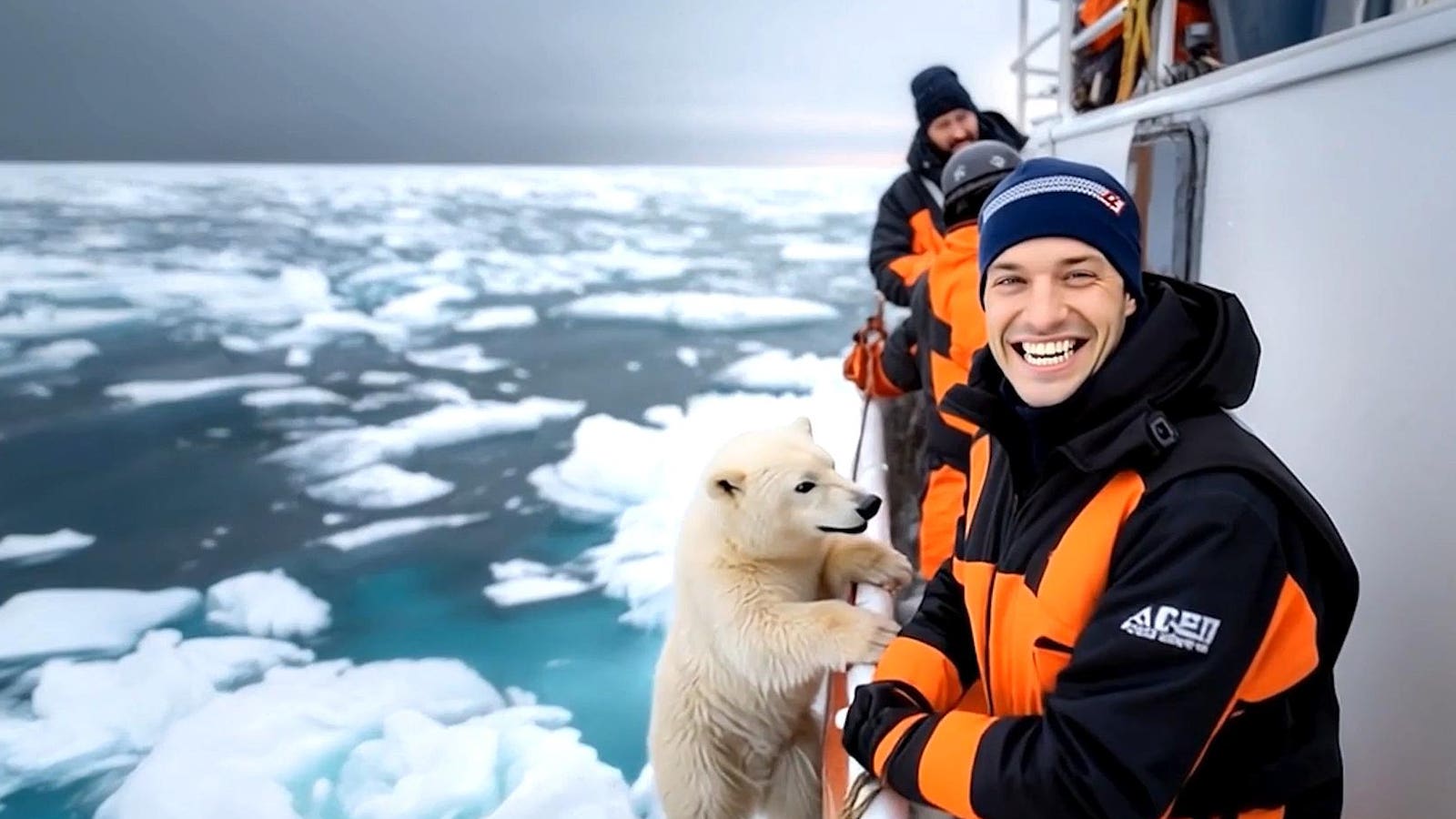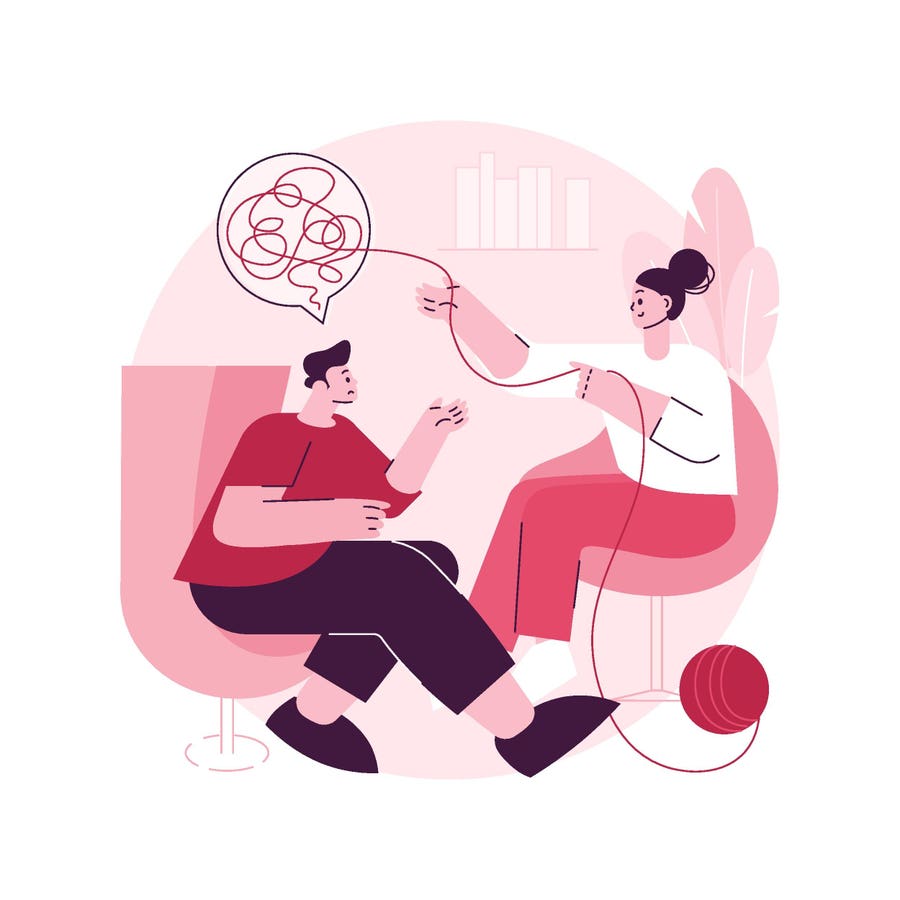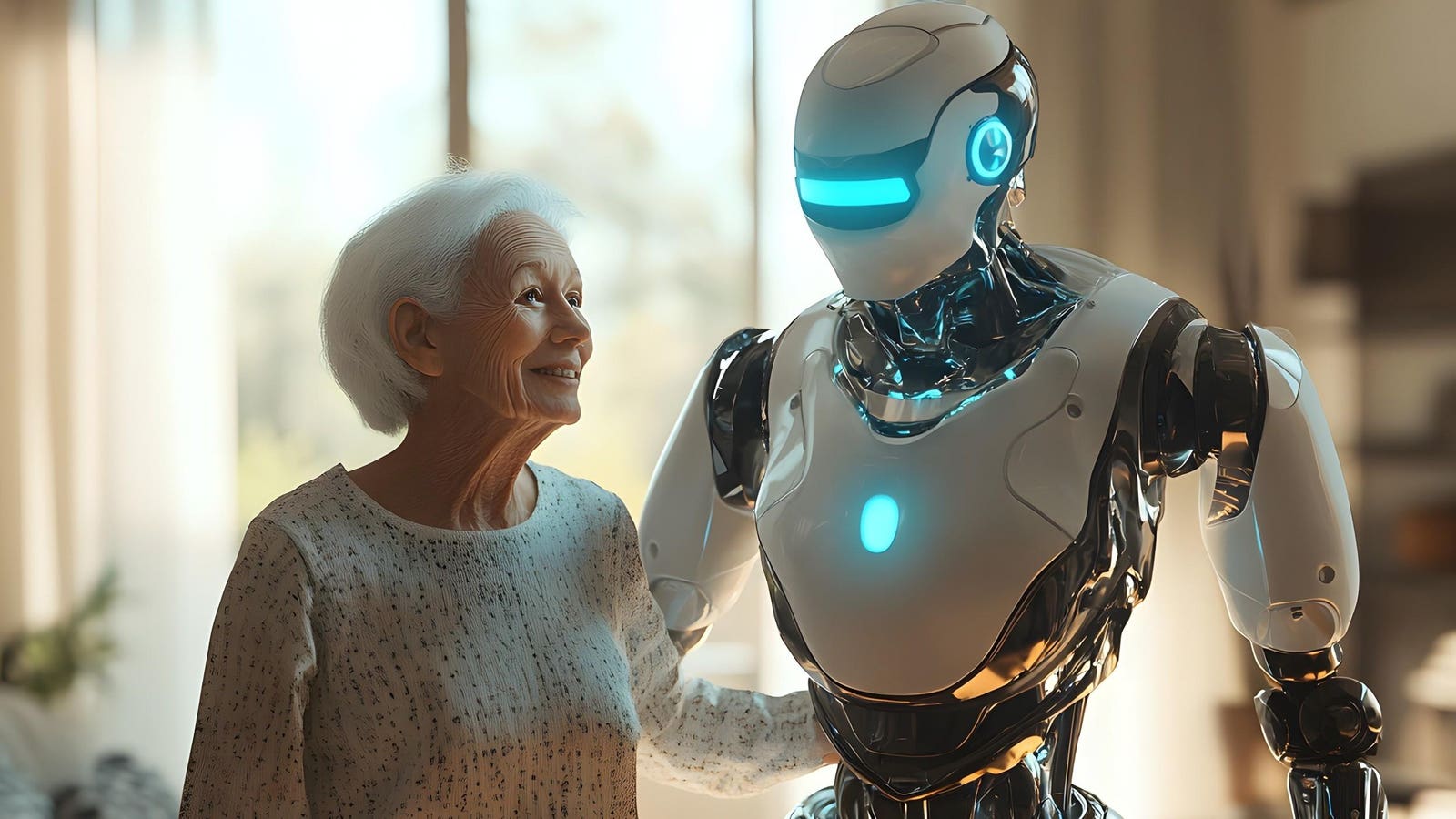Remember when a boat crew rescued a polar bear last year, but really didn’t because the widely … More
For a greatest-hits parade of viral AI images, just watch a new public service announcement designed to help people spot AI fakery. You’ll get such classics as a skydiving baby, the late Pope Francis wearing a designer puffer coat, a boat crew not actually rescuing a polar bear cub and, of course, Will Smith slurping spaghetti. That meme from a couple of years back became an early benchmark of just how far AI images had to go to appear convincing.
A lot has changed since then, with AI tools for generating images and videos progressing toward realism at an astounding rate. The advancements open up countless creative possibilities, but with them comes a higher risk that people will confuse fake for real, sometimes with serious consequences.
“At stake is trust in substantiated information and the health of democracy,” said Betsy Morais, acting editor of the Columbia Journalism Review, the magazine for journalists published by Columbia University’s Graduate School of Journalism. That’s what prompted CJR to launch PSAi, a campaign aimed at helping the public distinguish real from AI-generated.
“For more than a century, photography has been one of the greatest tools journalists have had to establish truth and trust,” reads a description of the campaign. “But AI-generated images are making it increasingly hard to distinguish real from fake media.”
As part of PSAi, CJR partnered with creative agency TBWA\Chiat\Day New York to produce a short, snappy music video that serves as a crash course in AI-spotting basics. The video pairs some of the best-known AI-generated images out there with a song in the style of ‘90s rap delivering tips that might seem obvious to those attuned to AI oddities, but aren’t to the scores who get fooled.
“Extra fingers are a telltale sign, so is skin with the perfect shine,” the lyrics go. “Flawless hair that’s smooth and clean, warped faces in the back of the scene.”
To make the video, the TBWA\Chiat\Day team scoured social media platforms to collect AI-generated images ranging from the emotionally charged — a terrified little girl paddling through the floodwaters of Hurricane Katrina holding her dog — to the downright bizarre (I’m looking at you “Shrimp Jesus”). The images were chosen not only because they were “liked” and shared widely, but because they misled people into believing they were legitimate.
Which AI Tools Were Used To Underscore Risks?
The team animated the images using Runway’s AI video generation and alteration tools, specifically its Act-One feature, which makes it possible to animate facial expressions and sync mouth movements with speech. In the case of the PSAi video, image subjects appear to be lip-synching the rap lyrics. “That’s the way you spot AI,” Meta CEO Mark Zuckerberg appears to sing as he peeps into a window from outside (remember that one?).
An iProov study earlier this year revealed that many people can’t spot a deepfake, with 20% of consumers polled saying they don’t even know what one is. Dustin Tomes, chief creative officer of TBWA\Chiat\Day New York, stressed that PSAi isn’t intended as an anti-AI statement, but an awareness-building toolkit.
“The PSAi is designed to give people simple, effective tools to spot the difference, without requiring too much effort,” Tomes said in a statement. “This isn’t a silver bullet, but by delivering this education in a memorable way, we hope more people will engage and apply these lessons. After all, fake news doesn’t spread itself.”
The video certainly is attention-grabbing, even without an appearance by the internet’s favorite viral “emotional support kangaroo.”
The creative team behind PSAi scoured social media for AI-generated images that were liked and … More









